Table of Contents
This post may contain affiliate links to things like tours, hotels, Amazon associates and products. These help me earn a small commission at no additional charge to you.
My favourite new city I visited this year is easily Sarajevo. It’s beautiful, cultural, charming and unbelievably well-preserved. Although there are plenty of things to do in Sarajevo, it’s a lovely city to do not very much at all. Sitting outdoors and drinking coffee with the locals is enough!
Sarajevo is where east meets west. You’ll discover the rich history of Islam and Judaism, and soak up the history encompassing Ottoman rule, the Hapsburg Monarchy, Yugoslavia and the bloody fight for independence.
The last century has seen assassination, genocide, war and peace. It may seem like names and numbers in books but, when you come here and meet the locals, the history springs to life. You won’t leave Bosnia & Herzegovina without experiencing a strong range of powerful emotions, I can assure you!
Read next: is Sarajevo worth visiting?

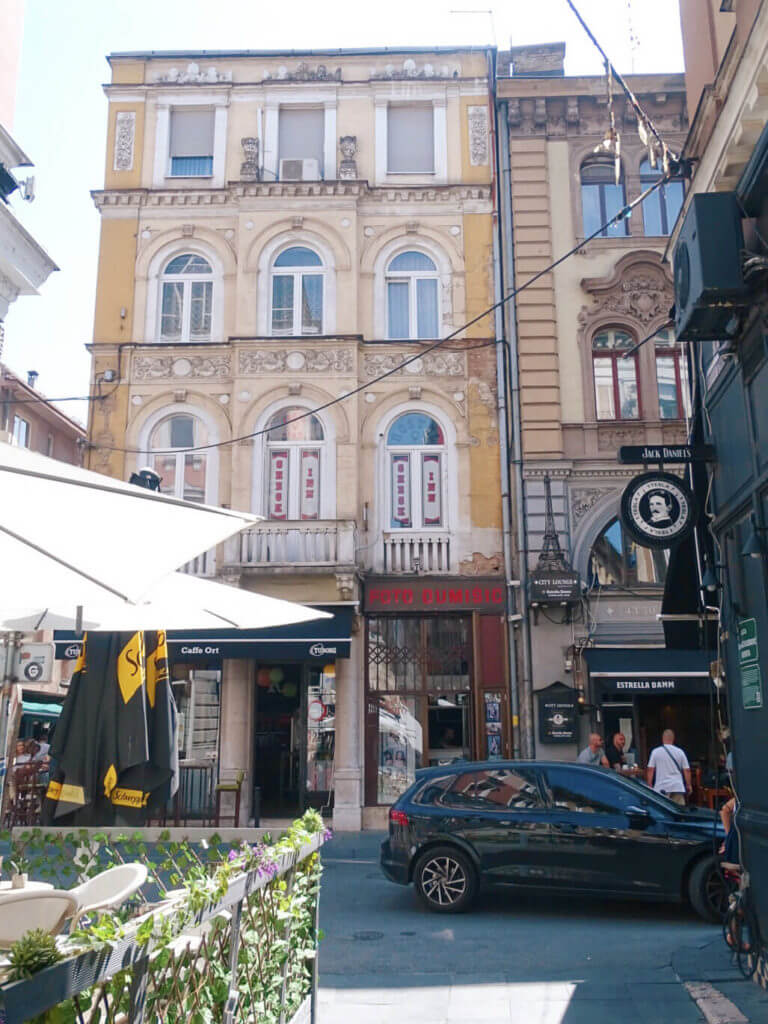
Sarajevo is my favourite city in the Balkans and will always hold a little piece of my heart. Here, people who had endured hideous cruelty showed me great kindness. On the other side of the coin, I witnessed the very worst of humanity while learning about the history. I will likely be forever changed, only slightly. That’s the point of travel, surely?
So, let’s get stuck into my Sarajevo travel guide…
SARAJEVO ESSENTIALS
Accommodation: Booking.com / Hostelworld
Getting there: flight / car / bus
Sarajevo activities: GetYourGuide / Viator

Read next: my Balkans itinerary for 2-8 weeks
How to get to Sarajevo
By air: Sarajevo International Airport is just 9km from the city and can be reached in 15 minutes by car or taxi (approx €10). There’s also a bus that takes around 30 minutes costing just 5 BAM (€2.50). I use Skyscanner to get the best-value flights, using the ‘whole month’ search feature to see the cheapest dates to fly.
By land: after completing my Montenegro itinerary, I visited Mostar before Sarajevo and caught a bus between the two cities for €12, purchased at the station. I like to use Flixbus when travelling in Europe but it only connects Sarajevo with certain cities like Zagreb (8 hours, €20) and Vienna (13 hours, €50). For other routes, book local buses at the main bus station.
How to get around Sarajevo
Walking: the old centre of Sarajevo is walkable; in fact, the bazaar area is pedestrianised. It’s easy to see most of the main Sarajevo tourist attractions on foot.
By bus, tram and trolleybus: for a few places like the National Museum and History Museum, you can catch tram 3 destined for Ilidža. Baščaršija stop is the nearest to the old city. Tickets for Sarajevo public transport can be purchased for 1.40 BAM (€0.70) from kiosks and drivers.
By taxi: although the usual apps aren’t available, you can hail taxis on the street or phone them (numbers listed in this guide). To avoid scams, ask for a price beforehand and check the meter is on.
Where to stay in Sarajevo
Anywhere near Baščaršija or Korvaci Street is a great location close to most of the main things to do in Sarajevo. Here are some specific places to stay:
- Hostel – the best-rated hostel is Infinity Boutique with a homey apartment feel. Hostel Ljubicica is also a good choice.
- Budget hotel – stay at Bed and Breakfast Vijecnic for a comfy base and fantastic central location. Check availability from €27.
- Mid-range hotel – pick Heritage Hotel Gate of Sarajevo for beautifully designed rooms, a hotel bar and a public swimming pool just 10m away! Check availability from €50.
- Splash out hotel – Hotel Hills Thermal Spa Resort is a great place to stay with spa treatments, swimming pools, restaurants and bars onsite for €90 a night, while Swissotel Sarajevo is THE most luxurious hotel in town with a great location and unrivalled restaurant and spa facilities (€130a night).
- Budget apartment – I had a lovely time staying at Apartment Dove owned by the friendly local family upstairs. Although it’s up quite a steep hill from Baščaršija, I’d still recommend it. It’s great value for a solo traveller like myself. Check availability from €20. Other highly-rated and well-located options are Enjoy Apartments and Aparthotel Centar.
- Browse all hostels on Hostelworld and hotels and apartments on Booking.com.
Things to do in Sarajevo
Here’s what to do and see in the wonderful capital of Bosnia & Herzegovina…
Baščaršija

Baščaršija is the central market area and my favourite place in Sarajevo. It’s bustling with locals and tourists enjoying the cafes, shopping for traditional products and souvenirs, and generally soaking up the atmosphere of this historic marketplace dating back to the 1500s.
Foodies take note, this is the best place to eat! Modest restaurants serve Bosnian favourites like burek (flaky pastry with savoury fillings) and cevapi (ground meat sausages served with bread and chopped onion). The locals certainly have a sweet tooth reflected by the many slasticarnas (cafes) serving cakes, baklava and other local delicacies, washed down with Bosnian coffee.
Keep reading for my restaurant suggestions towards the end of this post!
Sebilj

Start your Sarajevo sightseeing at Sebilj, a wooden fountain built in the 18th century that unofficially marks the old city centre. The square around it is dubbed Pigeon Square! Can’t think why?
An old legend says that anyone who drinks from the fountain will return to Sarajevo. Unfortunately, I didn’t drink BUT hope I’ll be returning anyway!
Buy souvenirs on Kazandžiluk, the oldest street in Sarajevo
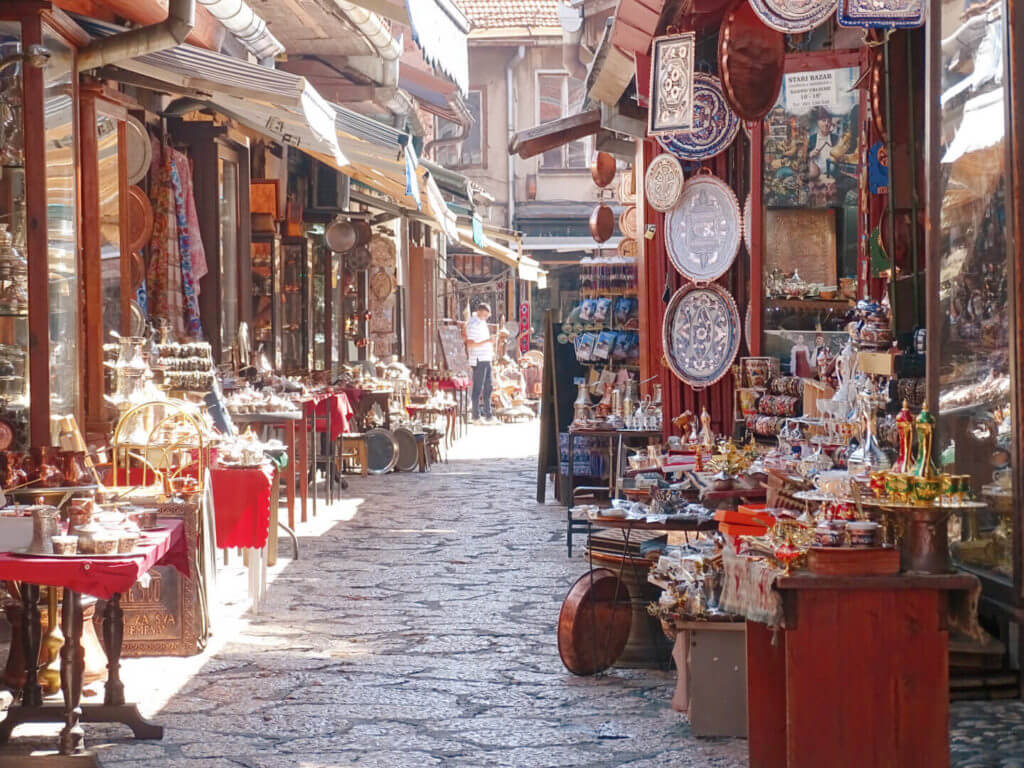
Easily the most fascinating street in Sarajevo (not to mention the oldest), is Kazandžiluk. It’s an indicator of how well-preserved Sarajevo is. Many traditional markets around the world have been lost to touristy t-shirts and fridge markets. Yes, there’s some of this in Baščaršija yet Kazandžiluk has managed to retain its authentic nature and craft: metalworking.
First formed in the 16th century on the land of a wealthy artisan and goatherder, the street is named after craftspeople who made ketals for the army. In the Ottoman period, they started producing metal coffee pots and table trays amongst other items, some of which are still produced on Kazandžiluk today.

Shoppers will think one of the best things to do in Sarajevo is wander Kazandžiluk, browsing for bargains. Be warned that most of the traditional shops are cash-only. I found one accepting card but the prices were higher than its neighbours.
That’s the story of how I lived on pasta and eggs for my last 24 hours in Sarajevo because I spent my last 60 BAM on a tea set!
Meeting of Cultures point

This historic point is marked on the ground where modern Ferhadija shopping street meets Sarači, a market street since 1531 when Ottoman governor, Gazi Husrev Bey, ordered 60 shops to be built.
Although the pavement sign is here, a more impressive comparison can be seen on the street behind where the ancient Tašlihan ruins (once an inn for merchants) sit beside modern Hotel Europe. Sarajevo is known as a city where east meets west and there are few sights more obvious than businessmen drinking Italian coffee on the hotel terrace, overlooking ancient Ottoman ruins.
Gazi Husrev-beg Mosque (and complex)
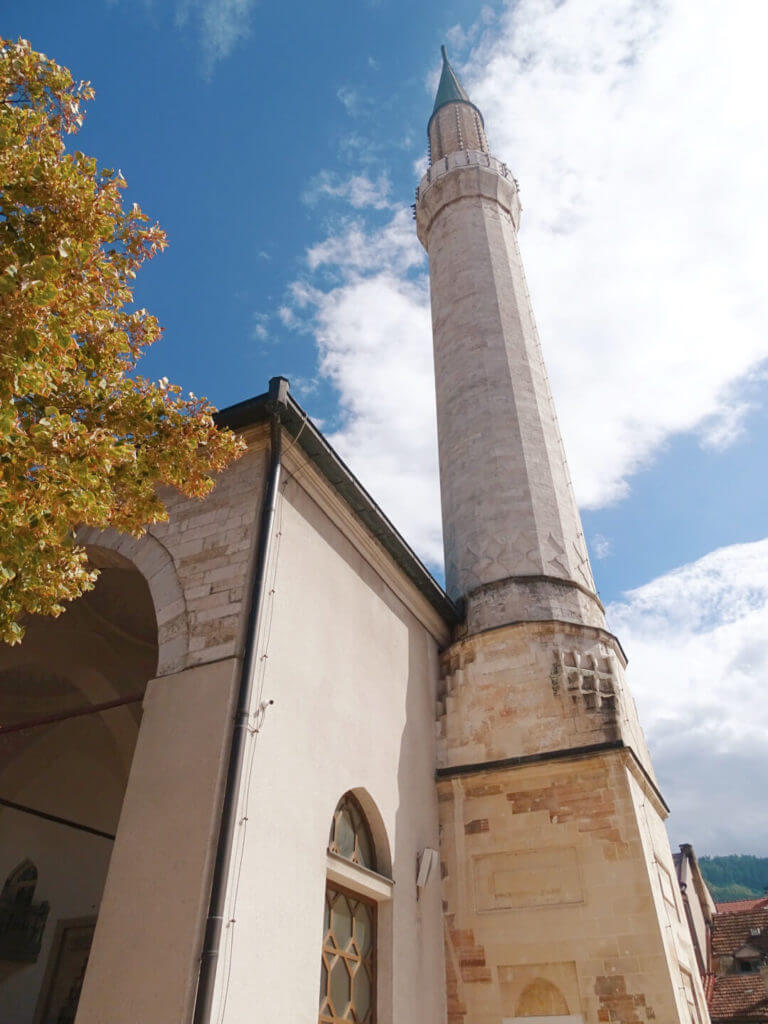

Gazi Husrev Bey is a name you’ll hear cropping up repeatedly. This Ottoman governor was best known for his successful conquests expanding the empire into Hungary and parts of Croatia (though as I learnt while living there, strongholds like Klis Fortress – now a popular stop for Game of Thrones fans – stopped them from capturing cities like Split).
You can wander in his complex for free and see the Mosque and tomb from the outside. Paid-for things to do in Sarejvo’s mosque complex include:
- Going inside Gazi Husrev-beg’s Mosque (3 BAM or 5 including the museum) – this is definitely worth it to soak up the decadence. Women must cover their hair but you can borrow a scarf for free from the ticket office.
- Gazi Husrev-beg’s Museum (3 BAM or 5 including the mosque) – this small museum in an attractive old school house is a useful place to learn about the history of Sarajevo under Ottoman rule.
- Gazi Husrev-beg’s Library (3 BAM) – I wondered if this would be a stuffy old library and I was wrong. I was pleasantly surprised by the beautiful, well-preserved books and the informative stories about Islam in Bosnia & Herzegovina.


Gazi Husrev-beg’s Bezistan (indoor marketplace)
The final place to visit in Sarajevo to appreciate the scale of Gazi Husrev-beg’s empire is the Bezistan. At this indoor marketplace built in the 1500s, local merchants would meet merchants from Venice and Dubrovnik to do business.
It was part of a larger complex including the nearby caravanserai, a type of roadside inn for traders (now the Tašlihan ruins).
The Bezistan wasn’t my favourite place. It’s developed a modern feel in recent years selling fake handbags, shoes and accessories so I preferred browsing the more traditional market stands on Kazandžiluk.
See the world’s only lunar clock

On the free walking tour, we visited the Old Sarajevo Clock Tower and our guide got us to guess why the time is wrong. When none of us could, he explained it’s the world’s only lunar clock based on the movement of the sun and moon, linked to Muslim and Jewish prayer times and the end of their fast (sundown).
Back in the day, the lunar clock striking midnight indicated when it was time to eat. Our guide explained that, because many people lived far from the clock and couldn’t see or hear it, a man with a canon was positioned at the Yellow Fortress on the hill with a view of the clock.
When it struck 12, he would launch the canon alerting the city that they could eat. As a foodie, I was amazed by this man’s dedication to dinner! What a shame my soulmate wasn’t born in my lifetime… 😉
Another fun fact about the clock is that it was built by the same company that made Big Ben in London. These are the only two remaining clocks in the world with this mechanism.
Visit other religious houses
Whether you’re religious or not, the many houses of worship in Sarajevo indicate the city’s diversity and tell tales of its past. A few more places to visit in Sarajevo include…
Cathedral Church of the Nativity of the Theotokos

The gigantic Cathedral Church of the Nativity of the Theotokos is known for its ornate interior and stained glass. Beside it is a giant outdoor chessboard where locals play. For a fun thing to do in Sarajevo, join them!
Entry is 2 BAM. Apparently, you’re not allowed inside wearing shorts or short dresses/skirts.
Old Orthodox Church
As the name suggests, the Old Orthodox Church is one of the oldest monuments in Sarajevo with an impressive interior and a small yet rich museum of cultural artefacts. The hidden courtyard is a peaceful oasis in the busy city. It’s certainly worth poking your head inside.
Ashkenazi Synagogue
Ashkenazi Synagogue is the main house of worship for Sarajevo’s Jewish community. Built in Moorish style, it’s just as attractive inside with beautiful wall and ceiling art.
It’s open from 10am-2pm with a 2 BAM entry fee, Men must wear a kappa.
Sacred Heart Cathedral

Sacred Heart Cathedral is the largest cathedral in Sarajevo built during Austro-Hungarian rule and designed by Hungarian architect, Josip Vancaš.
Outside, you’ll see a statue of Pope John Paul II who visited in 1997 after the war to spread the message of peace and tolerance.
Grand Emperor’s Mosque
I wandered through the Grand Emperor’s Mosque complex en route to Sarajevo Brewery, south of the river. Built in 1457 as the first mosque following the Ottoman conquest of Bosnia, it has a tranquil riverside setting and more of a ‘local’ feel than Gazi Husrev-beg’s in busy Baščaršija.
Although I didn’t go inside the mosque because a ceremony was happening, it’s free to enter the complex and feels welcoming to tourists.
Visit City Hall (Vijećnica) for history, culture & modern art

A visit to City Hall is one of the best things to do in Sarajevo to better understand the history and culture of the city. During Serbian occupation in the 1990s, it was burnt down along with two MILLION books in what our guide called ‘culturcide’.
My visit in 2022 marked 30 years since the event and, thanks to the Austrian government and European Commission, it was fully restored, and reopened in 2014.

Entry is 10 BAM and the audio guide is a further 4 BAM (purchased on the app store for €2). I would recommend the guide because, without it, you’re just walking around a pretty building without any explanation. However, there are some history exhibits upstairs and a war tribunals gallery downstairs where you can learn with or without the guide.
Latin Bridge & Sarajevo assassination location

After visiting City Hall, cross the river and walk along the opposite bank past the Grand Emperor’s Mosque. Cross back to the city side via the Latin Bridge and you’ll reach the location of the Sarajevo Assassination that triggered WWI.
When Arch Franz Ferdinand and his wife, Sophie, were assassinated by a Serbian sniper on 28 June 1914, the Austro-Hungarian Empire launched war on Serbia. Other European nations were drawn in and the first major world war began.

It’s here that the footprints of the sniper, Gavrilo Princip, can be seen. If you think this seems like a strange way to commemorate a murder, you’d be right. These were built when Sarajevo was part of Yugoslavia, largely controlled by Serbia.
Even today Princip is considered a hero or villain depending on one’s political stance. Just a 20-minute drive away in the Srbska Republic part of the capital (lived in by the Bosnian Serbs rather than Bosniaks), there’s a park named after him.
Wander down Ferhadija street

To the west of the Meeting of Cultures point is Ferhadija, the main shopping street in Sarajevo. Grand Austrian mansions house commercial shops, while small stands sell local snacks and pomegranate juice. There are some great restaurants in this part of town.
Ride the cable car into the mountains

For a fun thing to do in Sarajevo, take a ride on this cable car that gains more than 1,100m of elevation in seven minutes. It’s not just a tourist attraction because locals also love to take it. Tourists will pay 15 BAM one way or 20 return.
It takes you to the top of Mt. Trebević (which can also be reached by car, taxi or hiking) boasting fantastic views, walking trails and the chance to visit…
The abandoned bobsleigh track of the 1984 Olympics
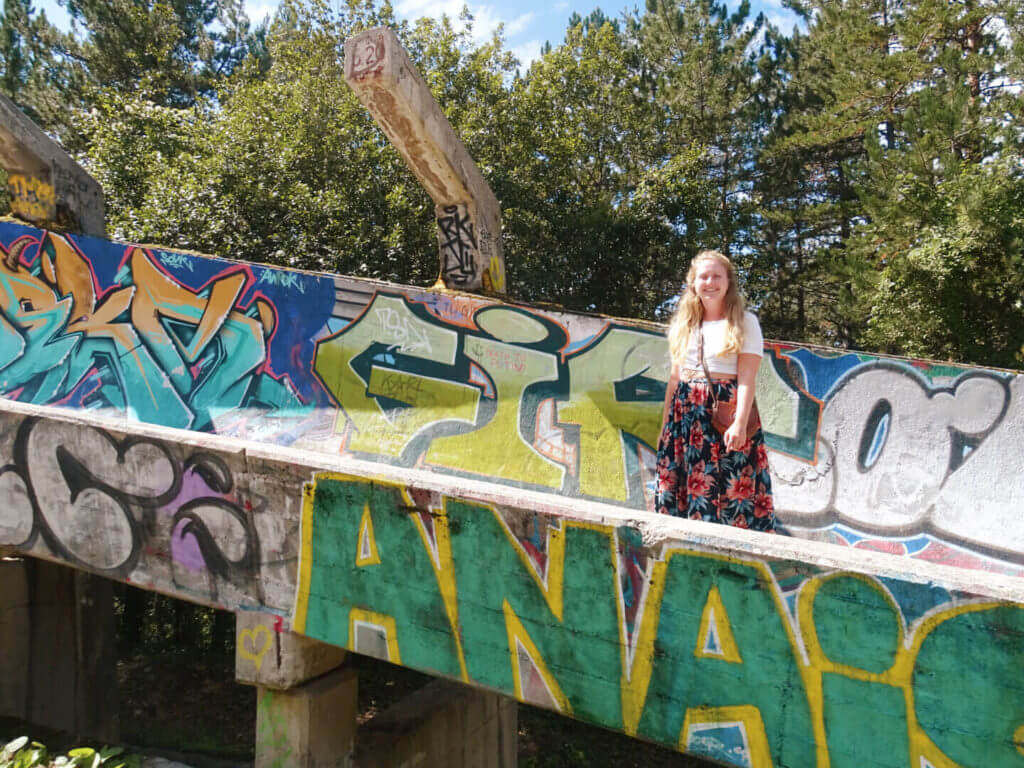
This is a fascinating place to visit in Sarajevo that’s become a cult location for travellers who love quirky places. The bobsleigh track of the 1984 Olympics was abandoned just eight years later when war broke out in Bosnia & Herzegovina. Used by snipers, bullet holes can be seen in the structure today.
Nowadays, it’s thankfully transformed. Instead of being a dark and scary place, it’s splattered with colourful graffiti and visited by tourists. Looking at this photo of me smiling while walking along it, I can’t help but think how locals would have dreamed of this moment during the horrific siege of 1992-96.
Note – rather than visit the bobsleigh track, Yellow Fortress and Tunnel of Hope separately, there’s a tour that includes them. More about this later.
Tunnel of Hope

Another of the fascinating things to do in Sarajevo is visit the Tunnel of Hope. While the capital was surrounded by the Bosnian Serb Army and cut off from the rest of the world, it was the only escape route as well as a means of smuggling in food and weapons.
Our guide (in her 50s) escaped down it during her youth. Even writing this out months later gives me goosebumps.
Entry is 10 BAM, cash only (no Euros accepted). Since it’s hard to get there by public transport, I would suggest going as part of a tour.
Walk out of town & see the Eternal Flame
Head past the Meeting of Cultures point down Ferhadija Street and you’ll pass the Vječna Vatra memorial to the victims of the Siege. A continuously burning flame promises they won’t be forgotten.
The street continues down to Veliki Park where there are a couple more memorial statues. It’s a good place to escape the touristic city centre and see local life.
Sunset at the Yellow Fortress (Žuta Tabija)
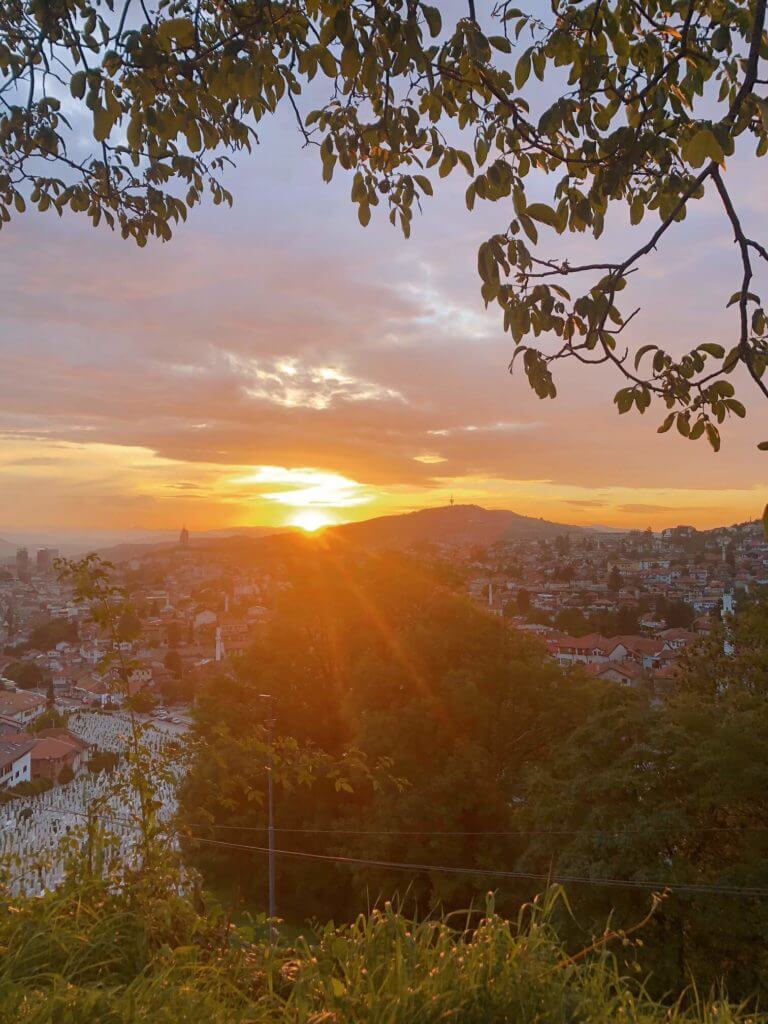
The most beautiful vantage point in Sarajevo is the Yellow Fortress. Each night, people congregate to see sunset over the city and hills. It’s impossible not to feel reflective and think about all that this captivating city has been through.
Saying that, it’s not a sombre thing to do in Sarajevo. People of all ages and nationalities rub shoulders over a few beers with music playing. Don’t miss it!
Tip – although I never made it there, I hear Kamarija is a great cafe near the fortress with unrivalled views.
Pay your respects at Kovači Cemetery

En route to the Yellow Fortress, you’ll pass Kovači Cemetery dedicated to lost soldiers during the 1990s War. The sea of identical white graves stretches as far as the eye can see. You’ll also find the tomb of Alija Izetbegović, the first president after Bosnia & Herzegovina became independent following Yugoslavian rule.
Look for Sarajevo roses
If you see red paint splatters on the ground, know they’re not random. Sarajevo roses are all that remains of wartime shelling (it was estimated that 300 shells were fired each day). It was said that the marks looked like roses so they were filled in with red resin as a kind of memorial.
Many are disappearing as pavements in the city are replaced. See them while you can!
Tours in Sarajevo
Without taking local-led tours in Sarajevo, you won’t learn much about its history. Because the war is so recent, you get a first-hand account. It’s not often you travel places where this is the case, so make use of it.
Free walking tour
There are a few free walking tours in Sarajevo but after comparing reviews on FreeTour.com, I went with the Meet Bosnia free walking tour which departs at 10.30am and 3pm daily.
It mainly explores Baščaršija (the old town), Gazi Husrev-beg Mosque and the assassination spot. You’ll want to return to all these places in depth but the tour gives a fascinating introduction to Bosnia & Herzegovina and the history of Sarajevo.
Better yet were the personal insights. Our guide in his 30s recalled waiting at home as a child while his mother risked her life to fetch water during the Siege. To learn from locals who’ve lived the history is invaluable. You can leave a tip if you enjoy the tour, which I think you will.
For a more specific tour, take a half-day Siege walking tour
Fall of Yugoslavia tour

Following my free walking tour with Meet Bosnia, I decided to take their Fall of Yugoslavia Tour focussing on the war. We visited the Yellow Fortress, the abandoned 1984 Olympic park at the top of Trebevic hill and the Tunnel of Hope (10 BAM entry fee not included), accompanied by our guide who had escaped down the tunnel herself.
The tour was informative, fascinating and heartbreaking. As well as gaining a better understanding of the war, it’s a time-efficient way of seeing several important attractions in Sarajevo during half a day (although you may wish to return to Trebevic hilltop via the cable car as this is a fun activity).
Choose the 9.30am or 2pm tour costing 50 BAM (€25).
Srebrenica tour
The saddest thing to do in Sarajevo, but arguably the most important, is a trip to Srebrenica. This is the location of the heartbreaking genocide on Bosniak Muslims at the hands of the Bosnian Serb army.
The Srebrenica tour with Meet Bosnia (€60) is the best way to visit. Bring tissues and steal yourself for a difficult day understanding what’s often called the worst war crime since WWII.
Cultural things to do in Sarajevo – museums & galleries
In my opinion, the three museums below are the most poignant and powerful in Sarajevo.
Museum of Crimes Against Humanity and Genocide
If you’ve been to the genocide museum in Mostar, you can skip this similar museum. Otherwise, it’s definitely worth visiting the Museum of Crimes Against Humanity and Genocide to understand what happened to Bosnian Muslims in the 1990s.
Gallery 11/07/95
If you don’t have time for a day trip to Srebrenica, this is the number one place in Sarajevo to learn about the heartwrenching killing of 8,000 Muslim men on the 12th of July 1995.
Entry is 10 BAM and the audio guide a further 4 BAM; I don’t think there would be much point visiting without the guide.


Childhood War Museum
This is one of the best museums I’ve been to. Using objects owned by children during wartime (donated now they’re adults), it tells stories in a way not dissimilar to Zagreb‘s Museum of Broken Relationships – but far more tragic.
The War Childhood Museum was founded by Jasminko Halilović, author of War Childhood which features one-sentence memories from adults who survived the war as children. You can leaf through this book after making your way around the museum.
The exhibits change each year. My Airbnb host, a wartime child himself, mused that he ought to donate some of his own personal items. I hope he does.
I would recommend going when you’re in the right mood for these heart-wrenching museums and doing something totally fun and frivolous in between. It seems wrong to think of yourself, but they really are very distressing.
Other museums if you have time:
- Jewish Museum – to learn about the history of Judaism in B&H beginning when Jews were forced to flee Spain and Portugal in the late 1400s, it’s worth visiting this small museum inside an old synagogue. Entry is just 3 BAM (cash only).
- National Museum – I decided against going here since the main draw of the holy Jewish Haggadah is not on display in 2023. Check the reviews before you go as they’re a bit mixed. It’s a trek from town (a 30-minute walk from Baščaršija or you can take the tram). Entry is 8 BAM.
- History Museum – beside the National Museum, this place also has mixed reviews. It mainly focusses on the Siege and I hear this exhibit is under renovation for 2023 so it’s best to check the reviews before going. Entry is 7 BAM.
- TIP – if you do visit the National Museum and/or History Museum, be sure to visit the nearby Tito cafe covered in retro decor glorifying the former leader of Yugoslavia.
- Museum of Sarajevo 1978-1918 – beside the royal assassination spot, this one-room museum focusses mainly on this historic event. Entry is 2 BAM.
- Despić House – this historic mansion is worth a visit to see how wealthy families once lived. I didn’t go here myself as I’d visited several similar in Mostar and Albania.
Foodie things to do in Sarajevo
Well, it wouldn’t be travel without food, would it?
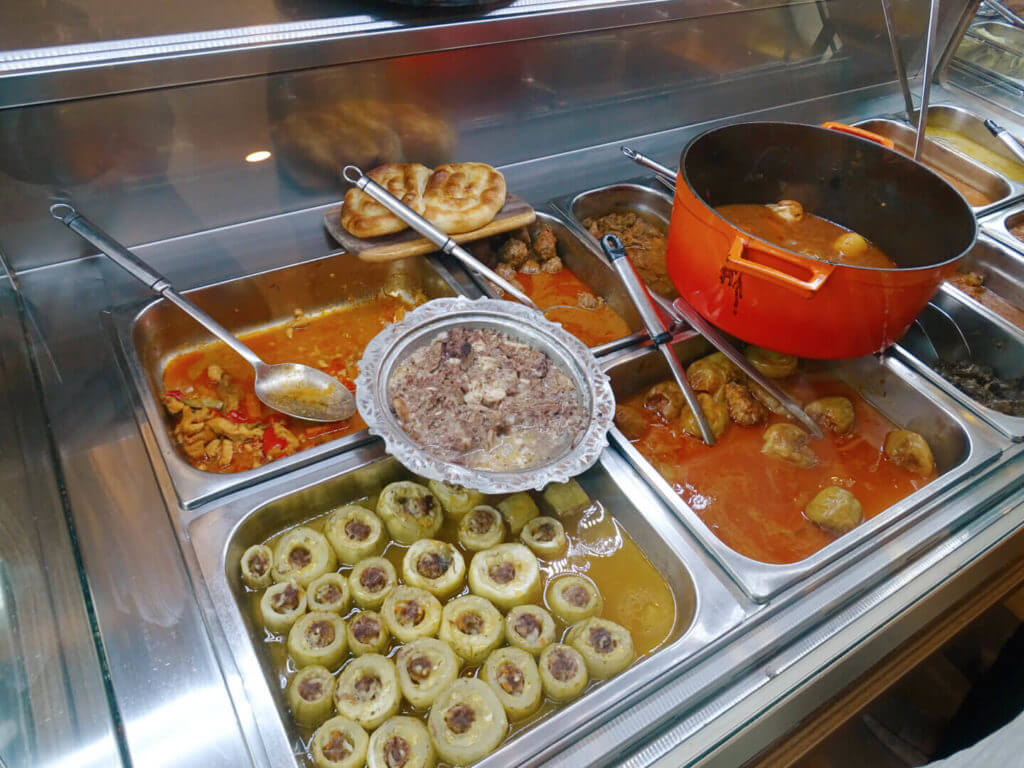
I really enjoy hearty Balkan cuisine and there are lots of great restaurants to try it. Here are a few foodie activities in Sarajevo to keep you busy and full…
Eat famous burek

Although I had become slightly sick of burek whilst living in Croatia, I couldn’t resist trying it at this buregdzinica (burek house) famed for serving the best in the city.
Sač serve delicious burek: flaky pastry filled with potato, cheese, meat or spinach. I paid 6.50 BAM for a cheese and spinach pie including a side of yoghurt to dip. Yum!
Sweet Corner!

The point where east meets west may delight you in more ways than one. Near the Sarajevo Meeting of Cultures point, you’ll find countless shops serving Turkish sweets. Whole windows are groaning under the weight of colourful confectionary. You can’t miss them!
There are so many varieties to choose from (although they largely all taste the same) and they’re very affordable.
Find famous baklava

Baklava Dućan is one of the most famous shops in the old market area. Sweet, delicious baklava filled with pistachio and infused with honey is served in different shapes and sizes from 3.50 BAM.
I chatted with the friendly staff about the city while tucking into these amazing desserts.
Browse Markale food market
This indoor market in a sunny yellow Austro-Hungarian building is the ultimate place to shop for typical goods and observe local life. Although it’s a vibey place now, it was the site of a bombing and a memorial plaque can be seen on the street.
The Markale food market Google pin will take you to the outdoor section on the street behind but this pin on Ferhadija street takes you to the indoor section.
Nearby, don’t miss Tepsija, a burek shop recommended by our walking tour guide.
Have a drink at Morića Han (one of the last remaining inns)
If you’re not familiar with the word caravanserai, it refers to roadside inns where travellers could rest after their journey. I may not be a market trader in Ottoman times but, as a tired backpacker in need of coffee, I’d argue its purpose hasn’t changed much!
Morića Han is one of the last of its kind. Set inside an atmospheric courtyard tucked away from the city centre, head to the Google pin for Caffe Divan to find it. For a relaxing thing to do in Sarajevo, while away a few hours here over 2 BAM (€1) Turkish coffee and (very sweet) tea alongside typical desserts.
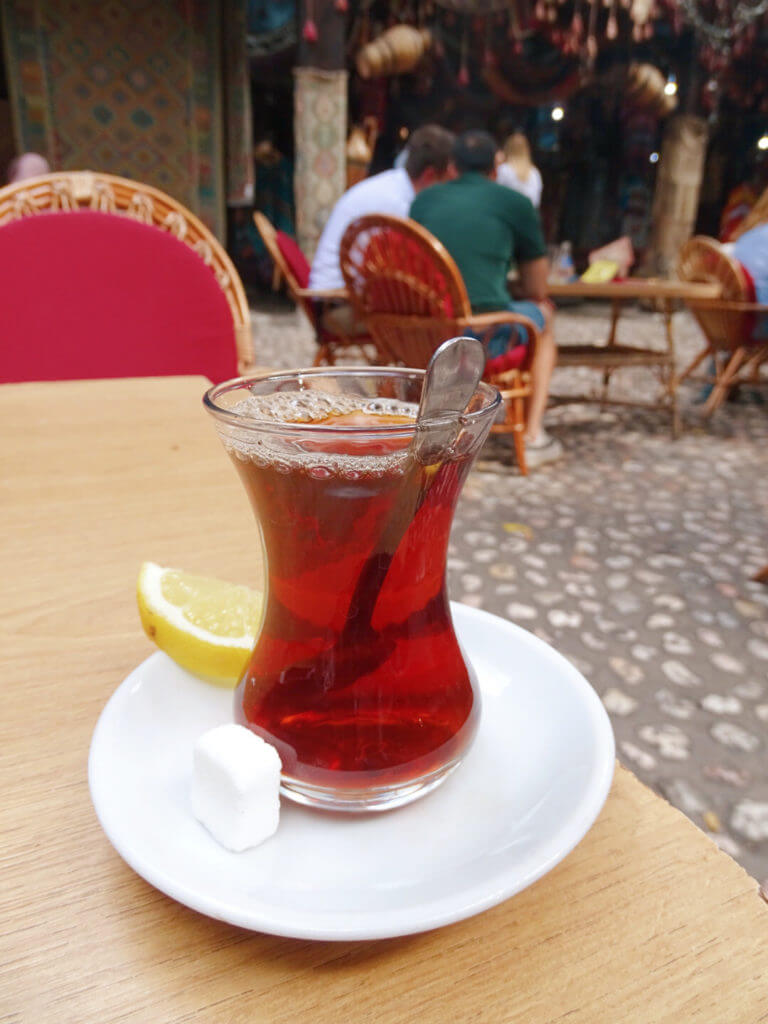

Sample tons of teas at Čajdžinica Džirlo
Tea lovers shouldn’t miss this spot. Teahouse Džirlo have every type of tea under the sun as well as cafe cats! What more could you want?
Teas cost around 4.5 BAM, served in beautiful copper kettles.
It’s on Kovači which is a cute street near Baščaršija. It’s the one you’ll need to take when heading up to the Yellow Fortress so take some time to enjoy it before you start the climb.
Have a pint at historic Sarajevo Brewery


Not only is this the country’s biggest brewery but it’s a historic landmark because locals would make the perilous journey to fetch water here during the Siege.
Today, it’s back to production and tourism as usual. However, I had a strange experience as I tried to enter the main complex and an intimidating man escorted me off the premises and into the museum and gift shop. The woman on the desk told me it was the only part of the brewery I could access, so I paid 10 BAM to visit the museum which was the most disappointing I’ve EVER been to.
For a pint, ignore the actual factory and head next door to Brewery HS. Sadly, it was closed when I tried to go despite the times on Google and the door (which differed from each other) saying it was open.
Although my experience was a fail, several locals told me it’s a cool venue to check out. They suggested just having a pint as the food is apparently overpriced and not too amazing.
Opening times: according to the sign on the door, 11.30am-11.30pm, Mon-Sat.
Drink speciality coffee

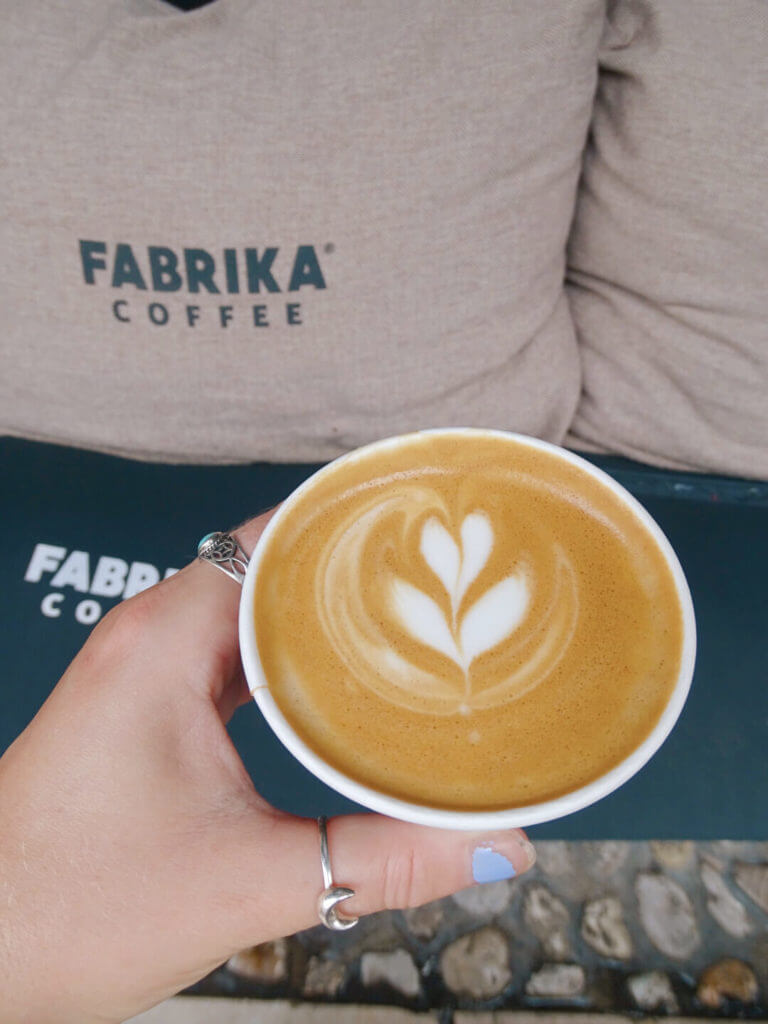
Third-wave coffee has come to Sarajevo, thankfully for people like me who haven’t yet learnt to love Turkish coffee. Coffee snobs, don’t miss:
- Ministry of Ćejf – great third-wave coffee in a lovely cafe with cute cats! I didn’t think the food was great (I had a just-okay sandwich and a smoothie bowl without much substance) but the coffee is fantastic
- Fabrika Coffee – a cool spot in the centre, although a sustainability nightmare (plastic cups to drink in) like most places in the Balkans.
Enjoy international food
If you’ve had enough of Balkan food (and after 5 months, I had), there’s some decent world cuisine in Sarajevo. I enjoyed…
- Falafel Restaurant – hummus, baba ganoush, falafel, salad and pita for 11 BAM.
- Šah Mat Burger – with brioche buns and juicy patties, these are the best burgers in town. The fries were even better!
Find cool bars
One place I wanted to check out and didn’t have time for was Zlatna Ribica. Apparently, this place is decked out from floor to ceiling with quirky 1900s clutter. Although I’m sad I missed it, maybe it’ll give me a reason to return to Sarajevo one of these days!
Tips for visiting Sarajevo
- Many traditional cafes and eateries only accept cash but most modern places accept card.
- Sadly I didn’t find any fee-free ATMs. Try a few to assess the fees; there’s a Nova Bank and Sberbank in the centre. I would suggest travelling with Revolut or Wise bank cards so you don’t rack up additional charges. UK travellers can also use Starling and Monzo.
- If leaving by bus, you’ll need to save some local currency. It was 4 BAM for luggage and a few BAM (I forget exactly) for the station fee. I would hold back another 4 just in case!
- The city centre is flat but most locals live up on the hills. Before you book accommodation, check if it’s up a hill. You might want to ask the host because Google Maps claimed the journey to my apartment was flat which was far from true. Pack decent footwear and sun protection in summer!
Where next?
I don’t recommend leaving Bosnia & Herzegovina without a trip to Mostar. With the feel of a big village, it’s completely different to Sarajevo though you will find a similar, lively Ottoman-style market. The many things to do in Mostar include taking day trips to Blagaj Tekke (a 600-year-old Ottoman house in beautiful settings), Kravice Waterfalls and charming Počitelj village.
In a rush? Take a day trip from Sarajevo to all these places in a day
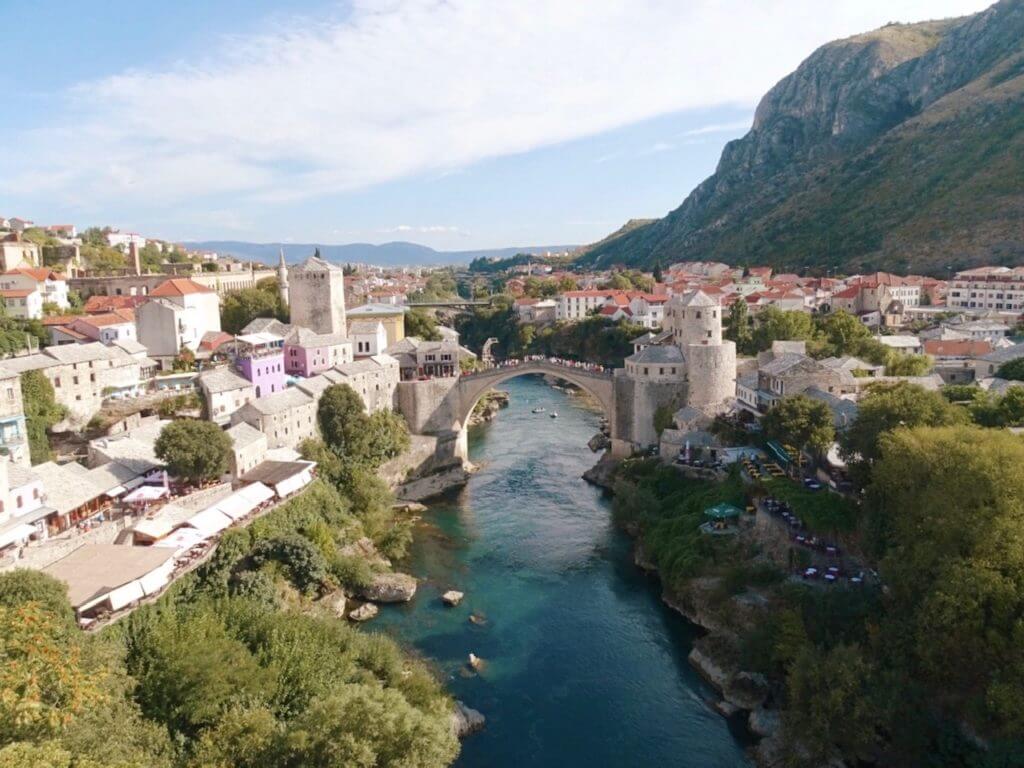
I hope you have a better idea of what to do in Sarajevo and you have a memorable and meaningful time there!
More Balkans destinations
Bosnia & Herzegovina borders Croatia, Montenegro and Serbia, all incredible places to include in your itinerary for the Balkans.
Browse more Balkans blogs:
- What to do in Belgrade, Serbia
- Is Belgrade worth a visit?
- The top attractions in Pristina, Kosovo
- The ultimate Albania itinerary
- Things to do in Tirana, Albania
- Is Albania worth visiting?
- Hiking in Theth, Albania
- Guide to Kotor, Montenegro
- 5-10 day Montenegro itinerary
- Things to do in Skopje, North Macedonia
- 2 week Romania road trip
- Things to do in Brasov, Romania
- Things to do in Timisoara, Romania
- How to spend 2 days in Sofia, Bulgaria
TRUSTED RESOURCES FOR VISITING BOSNIA & HERZEGOVINA
Getting around by air – I use Skyscanner and search by month to see the cheapest dates.
Driving in Europe – use Rentalcars.com to compare car rentals in European countries (and all around the world).
For hotels and self-catering apartments, I use Booking.com. You can filter by review score and price to find the best-rated budget places. For hostels, I use Hostelworld.
To save money on accommodation, I use Trusted Housesitters, a website that connects homeowners going away and travellers who can sit their homes & pets.
Browse tours and Mostar activities on GetYourGuide and Viator.
Need travel insurance? I use True Traveller (for UK & Europe residents) since it’s affordable but covers everything you’d need including various activities, valuables and pre-existing conditions. Unlike some companies, they insure you if you’re already travelling / don’t yet have your flight home booked. Get a quote.
For travel insurance for other nationalities, I recommend Hey Mundo and for long-term digital nomad travellers, I suggest Safety Wing.
Check out my resources page for more travel discounts and budget tips from my 10+ years on the road!
